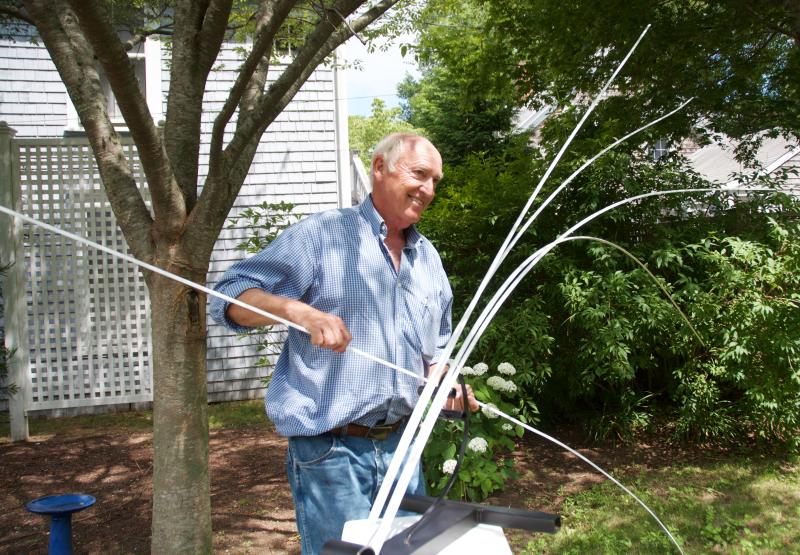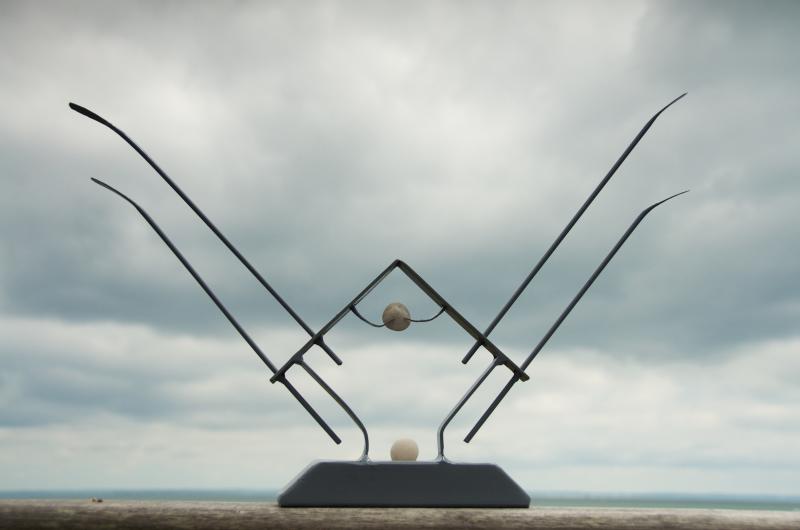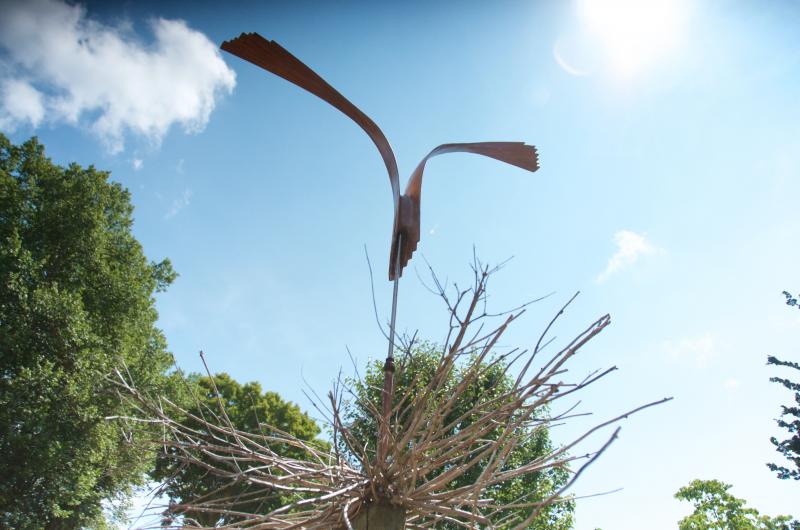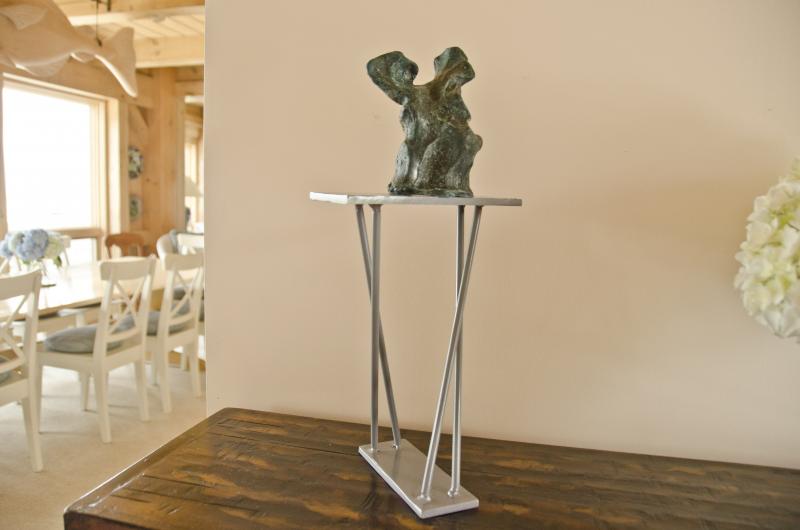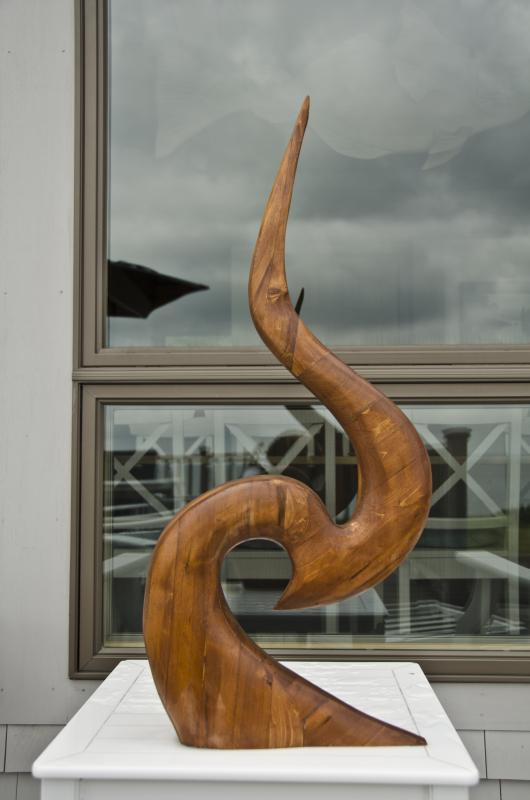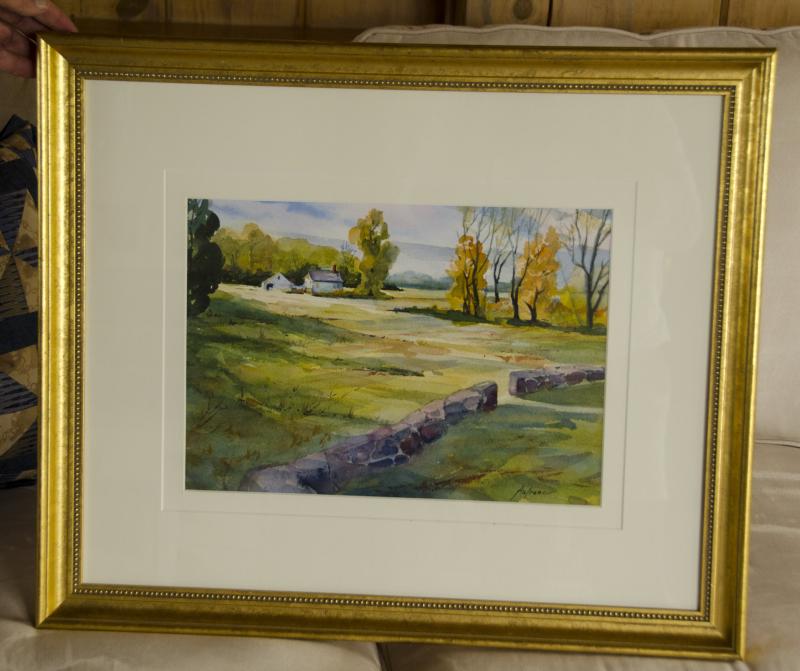Doctor turned artist produces pieces with surgeon's precision
Moving from the operating room to painting and sculpture may not be the most obvious path for a career orthopedic surgeon, but the technical aspects of surgery and art fit well with St. George Tucker Aufranc’s kinetic interests.
Aufranc, a Mattapoisett resident who previously lived in Wellesley, has done several solo art exhibits that showcase his paintings. His sculptures are currently on display at at the Marion Art Center and will be through mid August.
The retired surgeon’s interest in both art and medicine makes sense. His mother was a portrait artist and his father a prominent orthopedic surgeon.
Still, he maintains, “I had no intention of painting whatsoever.”
After spending time as an orderly and later a scrub nurse, Aufranc decided he would become a doctor.
“I would see people operate a lot,” he said. “I knew I could do it.”
Operating on joints appealed to him.
“I love making things, making things work,” Aufranc explained.
He graduated from medical school in 1968 and did several internships in the U.S. before studying orthopedics in Oxford, England. He was then scripted to the Navy during the Vietnam War where he became lieutenant commander of the Submarine Medical Service in Connecticut.
After getting out of the service, Aufranc took his training to New England Baptist Hospital where he did joint replacements for the rest of his career.
It was during a home visit to check up on a patient one day that he caught the artistic bug. The patient’s husband, Fritz Kubitz, is a prominent artist and his watercolors were featured throughout the house. Aufranc asked him for lessons.
“I could see his eyes rolling in the back of his head, but I could see he was caught,” said Aufranc.
Kubitz hesitantly agreed and gave Aufranc an honest opinion of his paintings: “It’s just terrible.” But, he also explained the technical aspects of watercolor so the surgeon could apply it himself.
Eventually, he was told to go home and do 50 full paintings.
“I went and read every possible book on art in the Wellesley Public Library,” said Aufranc. “Every one.”
When he came back with the paintings, Kubitz had to admit his student had improved.
“Three years later, I did my first one man show,” he said.
After he retired four years ago and moved to Mattapoisett with his wife of 50 years, Terry, Aufranc decided to take advantage of the free course offerings available at UMass Dartmouth for residents 60 years and older.
He did a year in sculpture and then got his own studio through the school.
“I’d never done any work in metal outside of orthopedics,” said Aufranc. “I became fascinated with how to do it.”
While Aufranc’s paintings are realistic renderings of the sea, boats, landscapes and his nine grandchildren, his sculptures are “moderately abstract.”
In the past four years, he has created sculptures from bronze, steel, clay, cement and wood – some small enough to fit in the palm of your hand, others several feet high.
Aufranc says he’s not quite sure where the ideas for his sculptures originate.
“Sometimes it just occurs to you, more often or not, or you see a space that looks like it needs something. Often just looking at the material that you have to work with you can see a piece,” he said.
Many of his pieces are about movement, something that perhaps harkens back to his years of studying joints.
A lawn adjacent to the Marion Art Center features one of Aufranc’s moving pieces, “Shooting Star,” a simple sculpture of metal and long arcing pieces of painted white molding that bend and move with the wind.
A piece on the Aufrancs’ seaside property incorporates feathers and teeters on the couple’s garden fence. Still another holds a single stone with a tenuous piece of metal that moves up and down with the ocean air.
“I like kinetic work,” said Aufranc. “I enjoy anything that moves.”
The surgeon turned sculptor’s work is, no doubt, deceptively facile, but few would make that mistake about Aufranc himself – even though he insists he isn’t complicated.
“I’m a pretty simple guy.”



